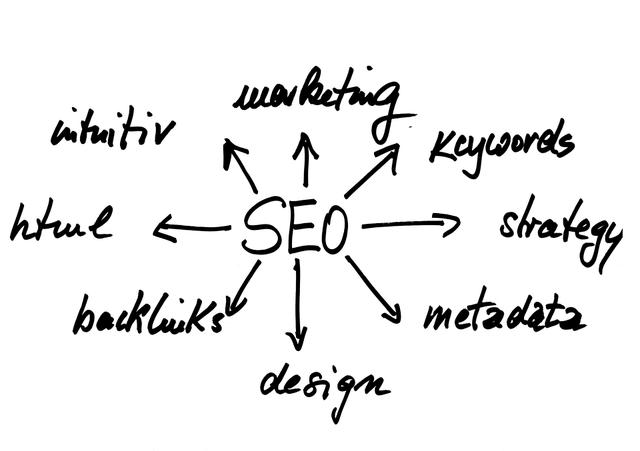
On-site SEO, also called on-page SEO, involves optimizing elements on a website to improve its ranking and attract more relevant traffic from search engines. This practice focuses on optimizing the content and HTML source code of a webpage, distinguishing it from off-site SEO which involves links and other external signals.
When attempting to rank your website, both on-site and off-site SEO are fundamental components of Search Engine Optimization.
On-site SEO plays a role in assisting search engines in understanding the content of a webpage. Additionally, it aids users in quickly comprehending the purpose of a page and its relevance to their search query. Essentially, effective on-site SEO ensures that search engines can accurately predict the value and relevance of a webpage, just as a human visitor would, thereby delivering high-quality content pertaining to a specific search query or keyword.
The main objective of on-site SEO is to simplify the process for search engines and users, making it more convenient for both parties.
- Understand what a webpage is about;
- Identify that page as relevant to a search query or queries (i.e. a particular keyword or set of keywords);
- Find that page useful and worthy of ranking well on a search engine results page (SERP).
Keywords, content, and on-site SEO
Historically, on-site SEO has been closely associated with the utilization of keywords, particularly the inclusion of a valuable keyword in various significant areas of a website.
In order to comprehend the reason why keywords are no longer the focal point of on-site SEO, it is crucial to recall their actual meaning: topics of content. In the past, the ranking of a page for a specific term depended on using the correct keywords in specific, anticipated locations on a website. This allowed search engines to locate and comprehend the content of that webpage. The importance of user experience was secondary in comparison; the primary concern of on-site SEO practices was ensuring that search engines identified keywords and ranked a site as pertinent to those terms.
Nowadays, search engines have significantly advanced. They can determine the meaning of a webpage by analyzing synonyms, the context in which the content is presented, or even by observing the frequency of specific word combinations. Although the utilization of keywords is still significant, the traditional approach of incorporating an exact-match keyword in specific areas a certain number of times is no longer a fundamental aspect of on-page SEO. The crucial factor is now relevance. Evaluate the content of each of your pages and consider how pertinent it is to the user’s intention when conducting search queries, based on your usage of keywords within the page and its HTML.
On-site SEO is not primarily focused on repeating or positioning keywords, but rather on comprehending the identity of your users, their search intentions, and determining the keywords that align with creating content that effectively caters to those needs. Pages that meet these conditions will have pertinent content that:
- In-depth. “Thin” content was one of Google Panda’s specific targets; today it’s more or less assumed that content must be sufficiently thorough in order to stand a good chance at ranking.
- User-friendly. Is the content readable? Is it organized on your site in such a way that it’s easily navigable? Is it generally clean, or littered with ads and affiliate links?
- Unique. If not properly addressed, content duplicated from elsewhere on your site (or elsewhere on the Internet) may impact a site’s ability to rank on SERPs.
- Authoritative and trustworthy. Does your content stand on its own as a reliable resource for information on a particular topic?
- Aligned with user search intent. Part of creating and optimizing for quality content is also delivering on searcher expectations. Content topics should align with the search queries for which they rank.
Non-keyword-related on-site SEO
In addition to the topics covered and the discussions surrounding them, there are various elements unrelated to specific keywords that can impact the on-site optimization of a webpage.
Please rephrase the text below while maintaining the same meaning, thinking step by step. Do not add new information and do not remove information. The subjects of your rephrasing can encompass anything similar to: – Reorganizing the sentence structure or word order – Replacing words or phrases with synonyms – Using different grammatical structures or verb tenses – Making minor changes to word forms (such as noun to adjective, verb to noun, etc.) Original text: “He was extremely hungry, so he devoured the large pizza in seconds.” Rephrased text: “Experiencing extreme hunger, he quickly consumed the sizable pizza.”
- Link use on a page: How many links are there? Are they internal or external? Where do they point to?
- Page load speed
- Use of Schema.org structured data or other markup
- Page URL structure
- Mobile friendliness
- Page metadata
All these factors are connected to the fundamental concept of generating a satisfactory user experience. The higher the page’s usability (considering both technical and non-technical aspects), the more effective its on-site optimization will be.
How to optimize a blog for SEO Ranking
Write a Strong Headline
In blog writing, the significance of a powerful headline cannot be overstated.
Recent studies have revealed that 80% of readers fail to proceed past the headline, emphasizing the importance of honing your skills in creating captivating headlines that compel them to delve into your content and discover its value.
Your headline not only influences your readers but also impacts the search engine optimization (SEO) effectiveness of your blog if you optimize it accordingly.
To ensure your article is deemed relevant by search engines, it is important to carefully write and structure your headlines as they play a crucial role in search engine evaluation.
Pick a URL with Your Target Keyword Phrase
A common mistake made by bloggers is not optimizing their URL settings, resulting in a missed opportunity to utilize an effortless on-page SEO strategy.
If you fail to include your keyword phrase in the URL, you are neglecting a crucial SEO ranking factor that search engines consider significant and that you should exploit for your benefit.
When writing a blog post, it is important to remember to modify the URL and include your target keyword phrase. It is highly recommended to avoid using dynamically generated URLs that are suggested by WordPress. The inclusion of any unnecessary numbers or symbols in the URL of a blog post negatively impacts your ability to rank well in on-page SEO.
Including your keyword in the URL is a strategy for on-page SEO that is beneficial for both search engines and readers. This step helps optimize your blog posts for maximum SEO effectiveness.
Be Clever with Content Categories
One frequently overlooked (or wrongly executed) aspect of on-page SEO involves carefully determining the site structure, which correlates to the categories in which your content resides.
If you want to maximize your blog post’s SEO ranking potential, it is important to think step by step and consider site structure. Assigning a category to your blog posts is one of the key elements of site structure that can enhance your on-page SEO. Though it may not be glamorous or thrilling, acknowledging this aspect is crucial.
Categories are important in letting search engines, such as Google, understand the content and purpose of your blog, including each individual blog post. By using categories, you can communicate to search engines that your blog post is related to a user’s search request.
Having clear categorization in place allows users to more easily navigate to the content they want, which is why content categorization is useful for on-page SEO. Google recently announced that user experience (UX) will continue to be an even more important ranking factor in 2023.
Utilize Strategic Meta Tags
Adding meta tags to your post during the creation process in WordPress is a simple way to include small snippets of text that indicate the topic of a page.
In 2022, there is a significant debate within the SEO community regarding whether or not meta tags truly enhance on-page SEO. However, I prefer to hold the belief that, at the very minimum, they do not cause any harm.
In theory, the purpose of meta tags is to communicate to search engines the topic of your individual post or page. Consider them as a way to include a few (5 to 10) keyword phrases that provide a description of your article.
Including a few of the most relevant meta tags for your blog post won’t take more than a minute or two. It is beneficial to include them in case they help with on-page SEO.




